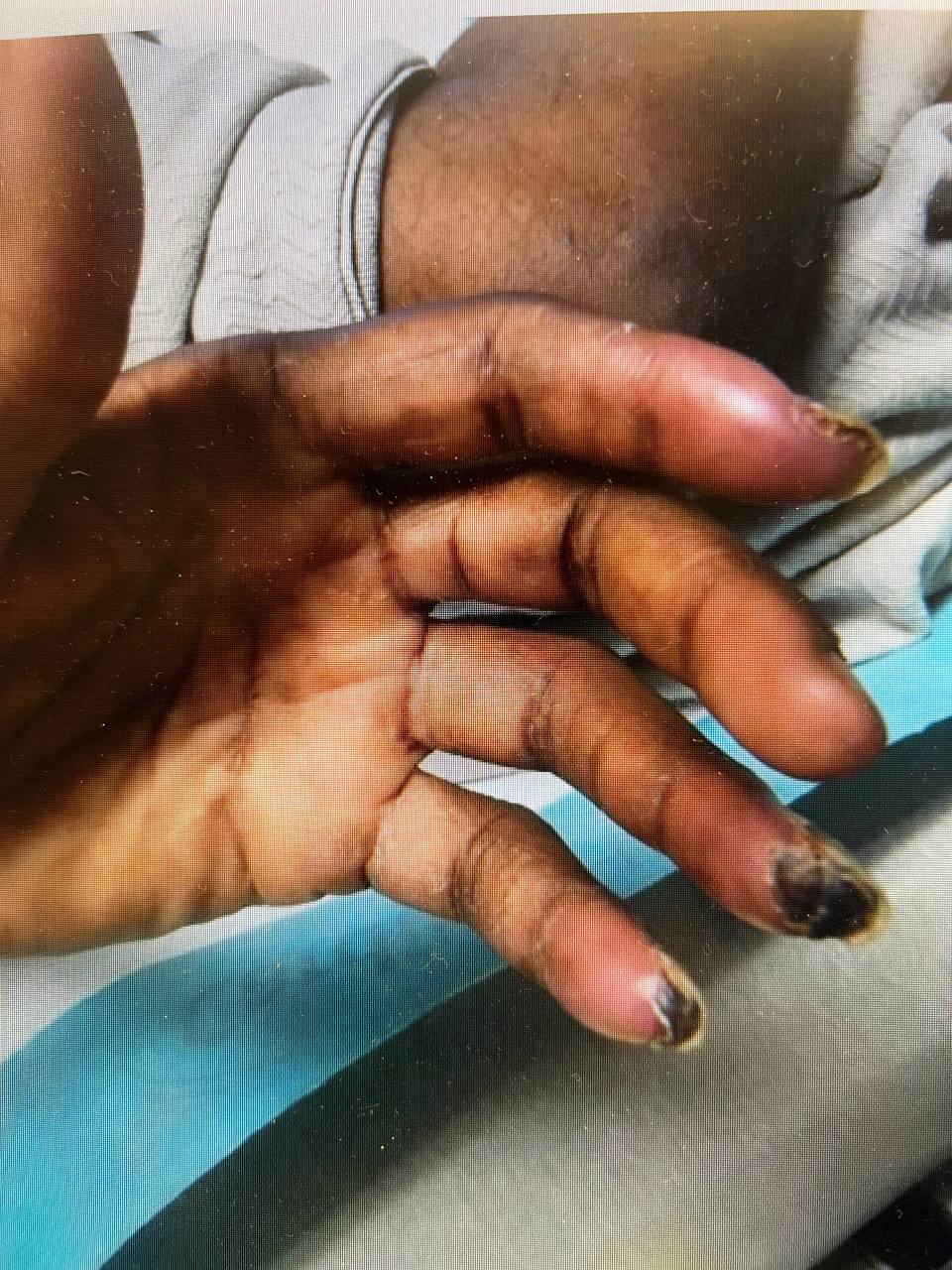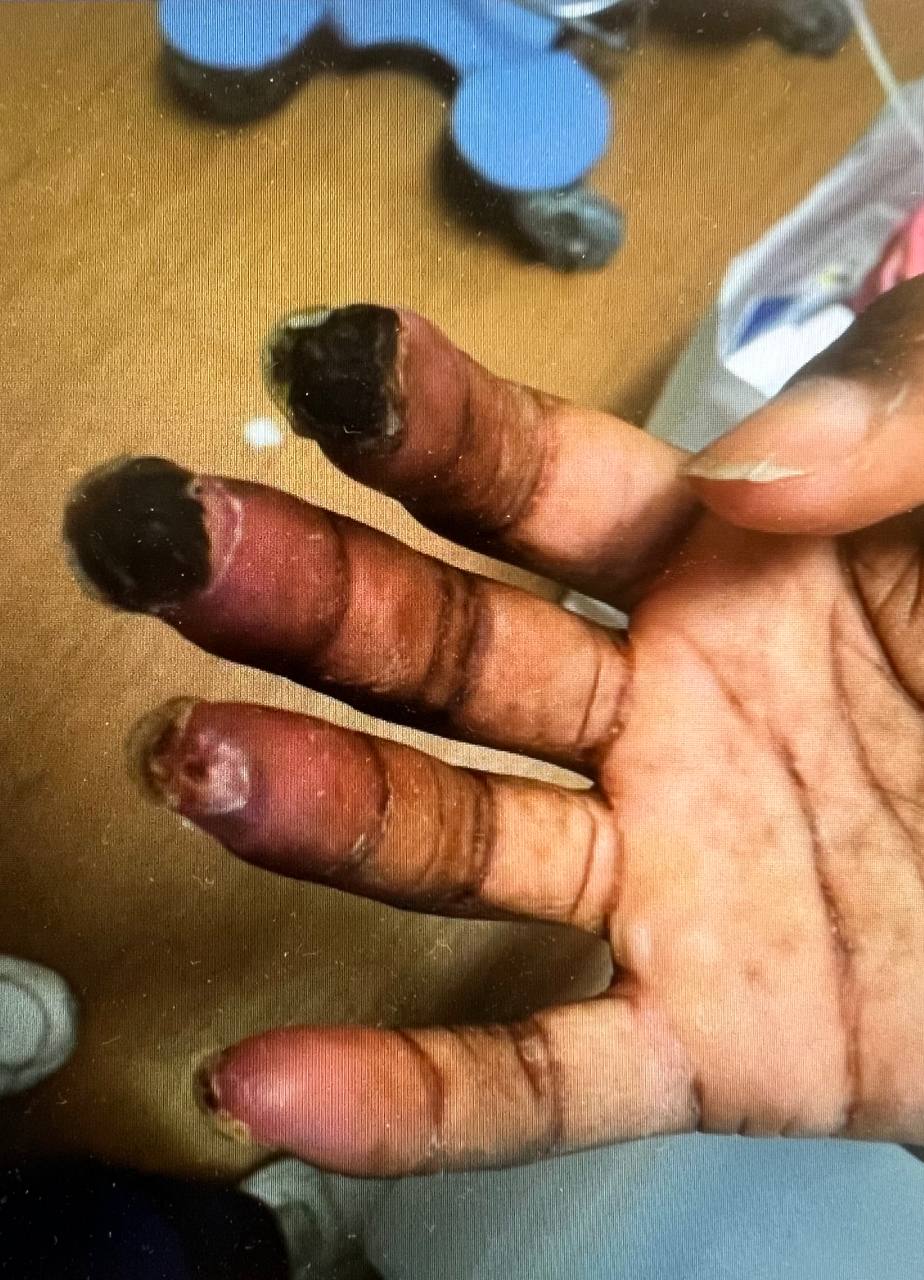Case Presentation: Introduction:Thromboangiitis obliterans, also known as Buerger disease, is a cannabis and tobacco-induced non-atherosclerotic inflammatory disease typically involving both small and medium sized vessels of the extremities. The disease can lead to multiple manifestations including superficial thrombophlebitis, cold sensitivity/ Raynaud phenomenon, digital ischemia, organ ischemia and arthralgias. Case description:A 35-year old cannabis using male, who started tobacco smoking 4 months prior, presented to the emergency department in the summer with a two-week history of severe bilateral finger pain, numbness, and tingling which worsened with cold exposure and improved with rewarming. The pain occurred in random 30 minute episodes in which his fingers would change from black to white and was severe enough to completely immobilize him. Physical exam showed ulcerations on digits 2, 4, and 5 bilaterally. Vascular studies confirmed critical small vessel disease in these digits but with sparing of his radial and ulnar arteries. Further workup ruled out autoimmune causes including SLE, Rheumatoid Arthritis, Sjogren’s, mixed Connective Tissue Disease, Scleroderma, hypercoagulable disorders, cryoglobulinemia and embolic sources. We started the patient on amlodipine, sildenafil, and topical nitrates. By hospital day five, he had improved enough to be discharged on the above regimen along with gabapentin and hydrocodone for breakthrough episodes, and the recommendation to never smoke again. The patient was ultimately diagnosed with Buerger’s disease due to fitting clinical diagnostic criteria: age less than 50 years old, recent history of tobacco use, distal extremity ischemia (objectively noted on vascular testing) and exclusion of other potential explanations. We thought that he had secondary cold insensitivity / Raynaud phenomenon which occurs in more than 40 percent of patients with Thromboangiitis Obliterans.
Discussion: This case is unique in that both the presentation of Buerger’s disease and Raynaud’s were unusual. He presented with upper extremity digital ulcers only whereas in Buerger disease lower extremity ulcers occurred in 46 percent, upper extremity ulcers in 28 percent, and ulcers in both upper and lower extremities in 26 percent in one series. The patient presented with only small vessel involvement of the digits whereas we think of Buerger disease as a condition typically involving both small and medium size vessels. He presented with a clinical picture of Raynaud’s disease during a sweltering summer month and he had involvement of digits 2, 4, and 5 whereas primary Raynaud’s phenomenon often spares the little finger and rarely has ulcerations at initial presentation. Nevertheless, his presentation fits Raynaud phenomenon secondary to Thromboangiitis Obliterans.This case highlights that vasculopathies can present with variable and atypical presentations. It is important to consider atypical presentations and the relationship between two disease processes to avoid anchoring on just one diagnosis.
Conclusions: Thromboangiitis obliterans can lead to secondary Raynaud phenomenon.


